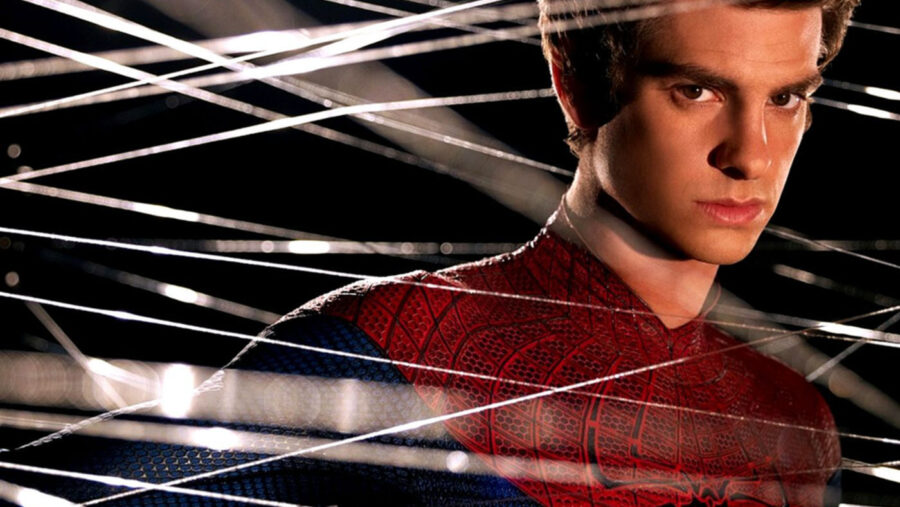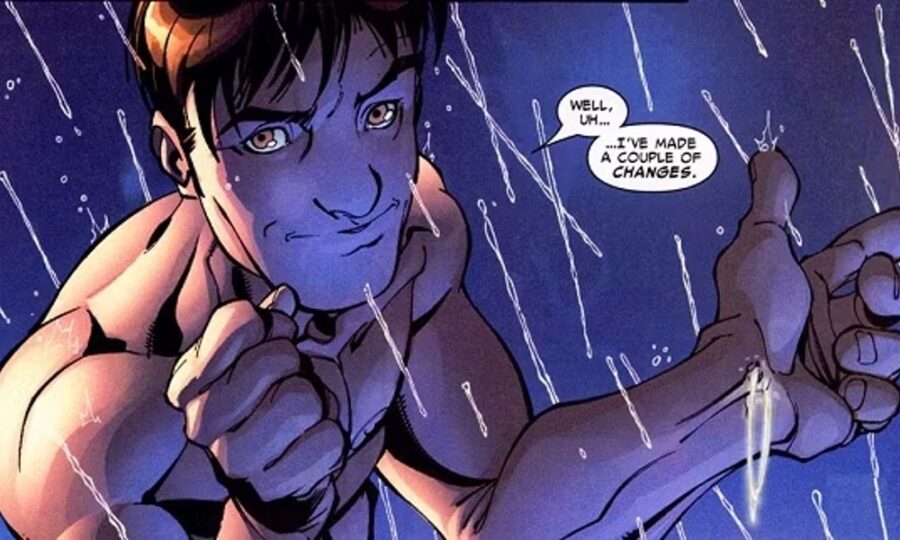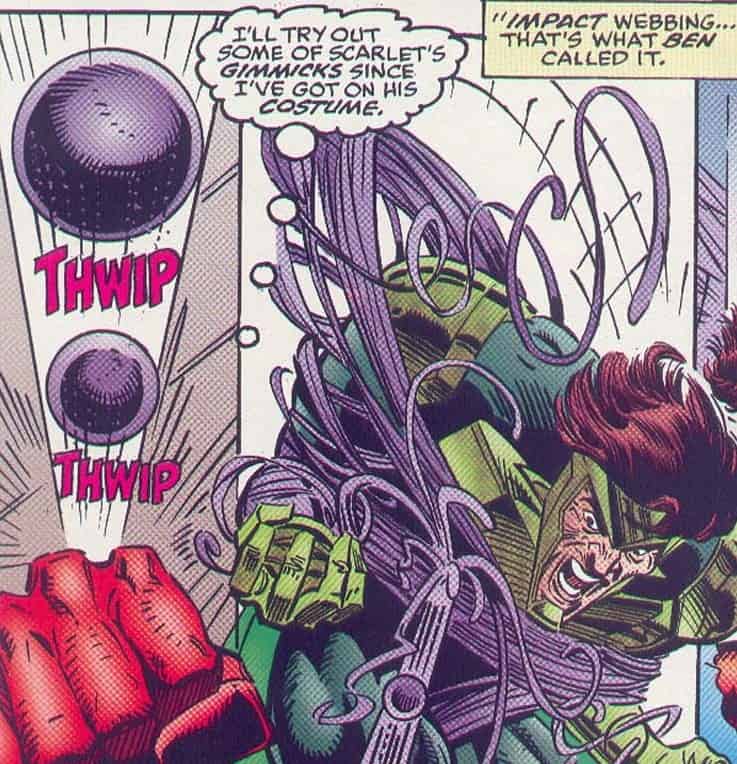How Spider-Man’s Webbing Works

Spider-Man may have the strength and agility of a spider, with the ability to stick to any surface, but his flashiest and most impressive power is his ability to generate super-strong webbing. Using the webs to swing between buildings, restrain criminals, and create massive webs capable of catching falling buildings is spectacular, but how does the webbing actually work? It’s a simple question with a complicated answer that depends on which version of Spider-Man you’re talking about.
Spider-Man invented his webbing formula and uses web-shooters, customized with different abilities depending on the situation.
Peter Parker developed the web-fluid in the classic Amazing Spider-Man comics and invented the mechanical web-shooters. That’s why he presses against his palm with his ring and middle fingers; the pressure triggers the web shooter, allowing him to shoot a continuous line or a short burst. To make sure they can’t fall into the wrong hands, it takes 65 lbs of pressure to trigger, a feat that’s easy for the super-strong Spider-Man but impossible for ordinary people.
That’s the version of the web-shooters that made it to the big screens in The Amazing Spider-Man with Andrew Garfield, and again in the MCU as Tom Holland’s Peter Parker also developed the web fluid. Tobey Maguire’s version in the Sam Raimi trilogy organically generated his webs from his wrist, though, as Spider-Man 2 proved, that didn’t stop him from dealing with a lack of webs when he needed them the most.

Briefly, in the comics, Spider-Man had organic webbing, in addition to more spider-based powers, including night vision and the ability to “sense” people touching his webs. In 2004’s Spectacular Spider-Man, during a team-up with Captain America, Peter is “reborn” following an encounter with The Queen that mutated him into a giant spider. He gets better and would retain the organic web-shooters for a few years before going back to basics.
The organic webbing was generated, according to Peter Parker, during the Spider-Island arc, by eating lots of starchy food. With the limitation of running out, and the inability to be customized depending on the situation, the organic webs were inferior to Spider-Man’s classic web shooters.
Spider-Man’s webbing can withstand 120 psi, enough to pin Captain America and slow down The Hulk.
Spider-Man has routinely tweaked the formula over the years, adjusting the webs so that they don’t conduct electricity when facing Electro and refining the formula to make them stronger. Capable of holding 120 pounds per square inch (psi), the webbing is super strong, and though it can’t stop Hulk, it’s sticky and strong enough to stop almost anyone else in their tracks.

In Captain America: Civil War, Spider-Man recreates The Empire Strikes Back by restraining Ant-Man’s legs in his Giant-Man form, the best example in the MCU of just how strong the webbing can be.
Spider-Man 2 demonstrates how leverage and his own strength allow Peter Parker to stop a speeding subway car. Beyond the power of the webs, there’s one final aspect that makes them the perfect crime-fighting tool, and that’s in the customizations.
When Ben Reily, the Scarlet Spider, took over during the Clone Saga, he debuted impact webbing. Instead of shooting a line of webs, the Scarlet Spider would fire off balls of contained web fluid that would explode on impact.
Since then, in the comics, Spider-Man has come up with ice, fire, and acid webbing. Generally, those are only used as the story demands it, but the MCU Spidey takes the cake for wild custom webbing.

Tony Stark’s modified web-shooters that debut in Spider-Man: Homecoming can shoot lines that act as GPS tracers, taser webs, ricochet webs, rapid-fire webbing, and even the classic holographic mask projection, reminiscent of the Silver-Age Spider-Man’s belt projector.
As for why Spider-Man’s webbing can’t be found all over New York City, it’s because the material dissolves after one hour. Not only does this prevent anyone from backward engineering the material, but it also allows the police to apprehend webbed criminals. This worked well in Sensational Spider-Man #8 when The Looter webbed up Ben Reily, unaware of the time limit.
Spider-Man’s Web-Shooters Make Him The Most Versatile Marvel Hero
Though the organic web-shooters were the first to hit the big screen, they only lasted for three films before the classic mechanical shooter became the new normal for Spider-Man.
Strong, fast, and adaptable to any situation, Spider-Man’s web shooters make him one of Marvel‘s most successful heroes. From long lines that allow him to swing to forming boxing gloves, the webbing is as flexible as the man that invented it.












